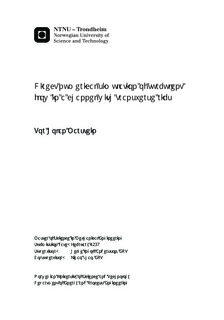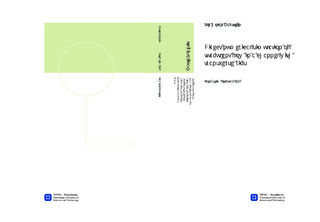| dc.description.abstract | Surface roughness is of great relevance in most engineering applications, as very few surfaces can be regarded as perfectly smooth. Investigation of the effects on the mean flow, as well as the near wall turbulence is therefore of interest.
In the present study, all scales of the turbulent motions are resolved using Direct Numerical Simulation (DNS). Transverse square ribs are introduced as a surface roughness model in a pressure driven channel flow at Reynolds number 395, based on wall shear velocity, to establish a streamwise inhomogeneity. The principal aim of the study is to see whether a specific in-house pseudo-spectral DNS-code developed for plane channel flow performs, even though it is, in principle, not suited for this specific application.
The results from the rough channel simulation are compared to both a smooth and rough channel reference case. The results are found to be almost identical to that of the rough channel reference. For the mean velocity profile, the logarithmic shape is maintaned, but the profile has a downwards shift due to the increased drag. Streamwise dependency for the mean velocity, as well as turbulence quantities, is found to be limited to the roughness sublayer, stretching out to z=5r, where r is the height of the roughness elements, indicating that the flow is unaware of the surface conditions in the outer region. Compared to the smooth channel data, roughness effects are mainly found to affect the flow inside the roughness sublayer.
It is proven that the pseudo-spectral DNS-code works well with the relatively small roughness elements, and despite the fact that streamwise homogeneity is removed, the results suggests that the quasi-homogeneity of the velocity field is sufficient for the pseudo-spectral code to deliver accurate results. Further, when accounting for reduced domain size, the grid point resolution is 43% less than in the rough channel reference case. This is motivated by reduced computational cost, but also serves as a check on the spectral-method's superior accuracy and reduced demand for grid point resolution. The results indicates that a relatively high level of accuracy is still delivered. | |

